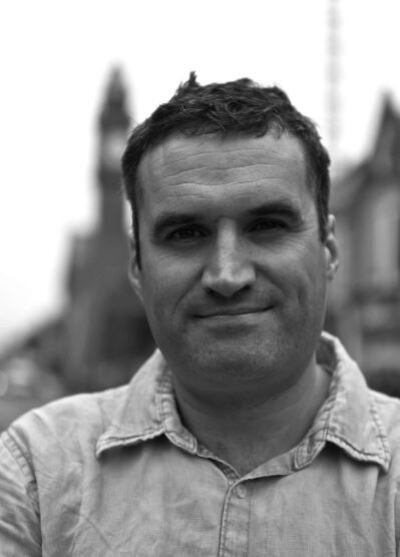When we work with innovative businesses working on “where next?” type questions, there is usually an impasse of some sort.
The business is trying to make a bet based on an understanding of human behaviour and it has tons of data. But the data is inconclusive. Or, the results of market research appear to say “no” to an idea that many in the business feel is the right direction.
On this week's Inside Marketing podcast, Vivian Chambers, founder and MD of Bricolage, joins us for an in-depth discussion around how smart brands are changing their approach to market research. Listen now:
Market research has thrived under the dominant ideology of commercial creativity of the last decade and a half. In his book Lemon: How the Advertising Brain turned sour, Orlando Wood challenges this ideology head on. We are seeing a prevalence of “left-brained” creativity dominating in many aspects of culture. By which he means overly rationalistic, calculated and literal.
Left-brained work is passing the research censor, for sure, but probably not catching fire in people’s imaginations. This means fewer iconic moments in popular culture.
At Bricolage we take a more right-brained view: research can be contextual, empathic and connected. To do this we bring culture early into the development process. And by culture we mean the kinds of things people form crowds around. Culture is what we copy, share and project as our communal identity.
Successful companies are increasingly using cultural deep dives and a fresh kind of right-brained creative research to unlock opportunity and growth.
Consider the story of Mark Anthony Brands. In 2015 this Canadian beverage company had a huge business in the flavoured alcoholic drinks category in the USA.
It had pioneered the invention of Mike’s Hard Lemonade, a real icon in the American beverage landscape.
But the company was losing share to me-too competitors and several product launches had failed to stick.
At that time, we were working with Davin Nugent who had previously overseen the stellar growth of Kopparberg in the UK. He moved to Mark Anthony and had a good idea of what the answer might be. A new generation of drinkers were appearing on the scene with a healthier and active lifestyle mindset. They were seeking products that they could “play with but also get away with” in terms of health trade-offs. (The biggest beers at the time were low-calorie and low-carb.)
Radical reset
Working on this assumption, we started a deep dive cultural study into new wave drinkers. The focus being on their culture, more broadly than on alcohol and its role alone. For Mark Anthony, this was a bit of a radical reset – mainly because we were not meeting with the usual suspects who frequent the category and asking the same old questions.
We used a with them/about them/be them methodology.
“With them” means meeting them online and in their own habitats to witness their active lifestyle. “About them” involves meeting experts and opinion leaders of the lifestyle tribes we had unearthed via desk research and social listening. “Be them” is literally going to the contexts they are in and trying their lifestyle on for size.
Following the collection of hours of in-person testimony, video, photo journals and product samples we had a rich map of the emerging active lifestyle experience overlaid with the (changing) role of alcohol beverages.
A pattern emerged from that data of a few key opportunity spaces that Mark Anthony could explore further.
Not every space we discovered was a clear fit, but one area stood out. An influential group of healthy lifestyle consumers were making the switch from soft drinks (or sodas) towards a range of new fresh-flavoured and natural sparkling waters that they called seltzers.
On further investigation, we found some tiny start-ups experimenting in the hard seltzer space and making significant waves at a local level. We went to these localities, met the sales representatives, trade customers and sampled the products with our new wave drinkers.
For the team at Mark Anthony this immersive discovery work provided the impetus for the development of White Claw Hard Seltzer which has literally changed the landscape of packaged flavoured beverages in the USA, and now around the world.
Connected technologies
Around the same time, Three Mobile Ireland came to us with an exciting opportunity. The business was looking hard on its category role and positioning as a new wave of connected technologies started to appear on the scene.
The team at Three was mulling over a challenging insight with its agency Boys + Girls: Irish customers had mixed feelings about the benefits of connected technology. They worried about what hyper connectivity would mean for their interaction time, deep attention and general wellbeing.
Three was seen to be at heart a technology-leading brand so this conflicted feeling was giving the team pause for thought.
Against that backdrop, we proposed a study with global consumers embracing the future of connectivity called the “Tech Progressives”. Connected devices were being used to enhance their lives and make more of their human connections. If you wear a Fitbit, live in a connected home, game on Discord or own an electric car, you fit the profile.
As the executive team worked through the richly textured material from our cultural investigation they unearthed a rich seam of opportunities. These were not speculations from an abstract trend report. Rather, this was a living representation of a tangible future horizon.
Besides product innovations, this work informed a lovely campaign from Boys + Girls featuring the Better Connected Life and the rollout of Three Connected Lifestyle stores across the country.
Carrot and stick
Finally, let’s look at Aldi Ireland and how a quirky character called Kevin the Carrot firmly joined the Christmas advertising establishment.
Over several years we have done a lot of deep-dive qualitative research with target shoppers of Aldi. We were finding a growing class of Aldi advocates who sporadically discovered ranges at Aldi that fulfilled a feeling of everyday amazing. But that feeling wasn’t always consistent. And this was particularly true at Christmas time where a sense of being on show is extra prevalent.
The key learning is to research creative early and shelter it within a broader cultural context
Aldi was working hard with the McCanns agency in Manchester to develop a campaign for both markets that would impact on premium perceptions while also making a dent in a sea of sameness during Christmas advertising breaks.
So rather than test focus groups on advertising, we ran Christmas clinics with our target audience to explore opportunities to enjoy an amazing Christmas with Aldi. People explored ranges they hadn’t considered at Aldi before and shared with us a different cultural model of what an Aldi Christmas might be.

At those clinics we also looked at early creative concepts and Kevin really stood out as a distinctive asset from the start. Yes, the characters spoke to childhood innocence and fun. But the real breakthrough was the underlying sense of premium-ness evident in the production values and the depiction of opulent Christmas feasts forming a backdrop to the theatrics.
The key learning here is to research creative early and shelter it within a broader cultural context.
Working in the space of creative cultural research is not a straightforward sell to those with a more extreme “left-brained” mentality. However, there is a rising need for research work that places equal value on human cultural experience at the front end of creative development.
Cultural truth can unlock real cultural breakthroughs.
Vivian Chambers is the founder of Bricolage
[ irishtimes.com/insidemarketingOpens in new window ]











